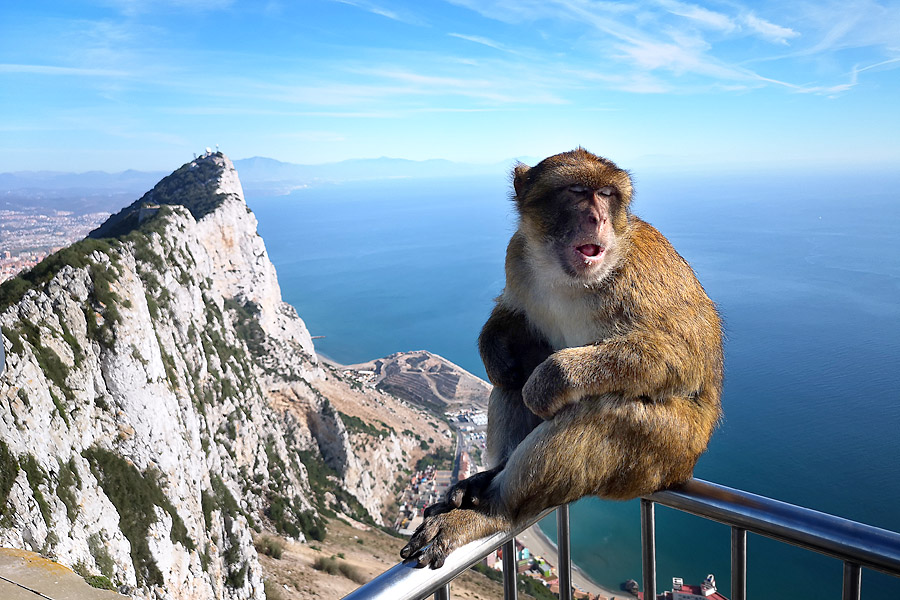
(2010-2024) I nearly fell out of the fight-chair, when Capt. Danny Gabay suddenly let out a huge roar right beside my left ear. I had struggled for an hour to land a powerful fish, and the crew had finally sunk two gaffs in it, prompting the Capt.’s deafening celebration.
I had not even seen the fish yet, but never doubted that it was a big. It was certainly the toughest fight I'd ever fought. And then I saw it. My eyes nearly popped out of my head when I glimpsed the metallic blue speed demon. It took many hours before it really dawned on me that I had caught a stunningly large Atlantic bluefin tuna, a fish in the 330-pound range. I had never imagined getting a chance to catch a bluefin – certainly not one of such proportions, and certainly not in waters off of Europe.
We were fishing in the fabled Strait of Gibraltar between the countries of Morocco and Spain, where Africa reaches up and nearly nudges Europe, the continents separated by a mere 7.7 miles of water at the narrowest point of this passage between the Atlantic Ocean and the Mediterranean Sea... The Atlas Mountains near Tangier in Morocco and the famous rock of Gibraltar, flank the strait, prompting the ancient Greeks to dub these opposing promontories as the Pillars of Hercules.
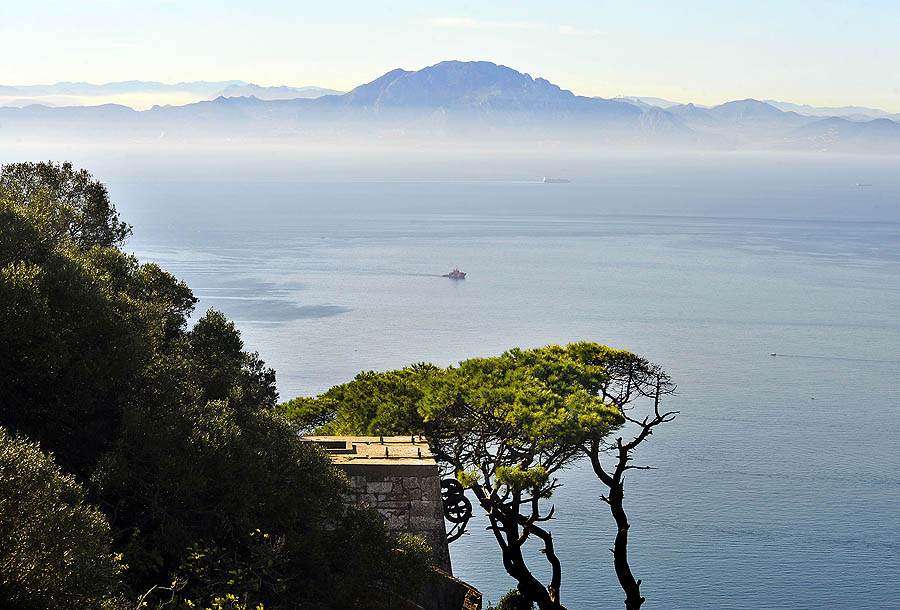
The tiny Gibraltar peninsula has belonged to Great Britain since 1713, and though occupying only 2.6 square miles, has always held strategic naval importance. Today, peninsula is also an important commercial center, which enjoys special tax benefit, and hosts a huge tourism industry, serving popular port of call for passenger cruise ships. The popular Barbary apes, which inhabit the top of the rock, and the glorious Mediterranean climate (air temperatures rarely dip below 43 degrees F) add to the appeal of the Gibraltar peninsula.
Bluefin Byway
As water funnels through, the Strait of Gibraltar between two great seas, enormous amounts of sea life accumulate, including shoals of forage fish such as mackerel, mullet and bonito. Dolphins, whales and large fish move in to feast. There is everything from horse mackerel to great white sharks, but the biggest angling attraction today is the Atlantic bluefin tuna, which can grow to well over 1,000 pounds.
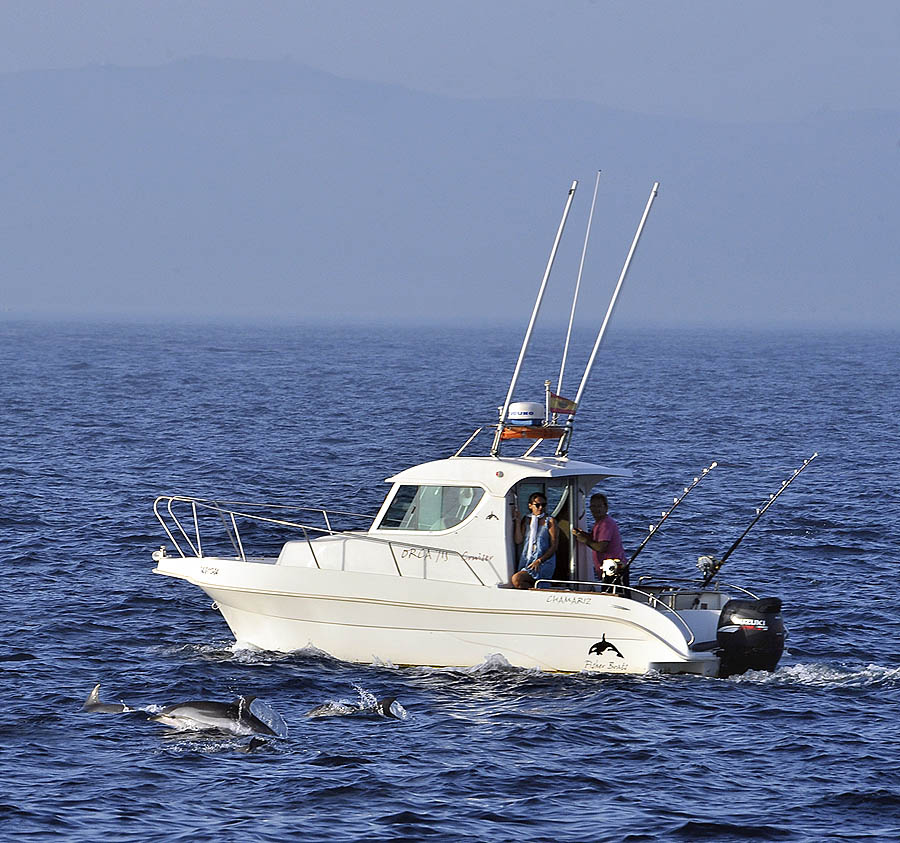 Yet it was not always this way in the Strait of Gibraltar. Until about 10 years ago, anglers found it difficult to catch the tuna here. A little over 10 years ago, the European Union established strict limitations on commercial tuna fishing in European waters, and since then, the bluefin tuna population has increased drastically.
Yet it was not always this way in the Strait of Gibraltar. Until about 10 years ago, anglers found it difficult to catch the tuna here. A little over 10 years ago, the European Union established strict limitations on commercial tuna fishing in European waters, and since then, the bluefin tuna population has increased drastically.
Bluefin tuna venture into the Mediterranean to spawn in April and May, and during these months there is exists a gentleman’s agreement among recreational anglers, not to fish for them. It is only when the tuna are heading back out again in July and August that anglers target the big ones.. In September and October, smaller tuna fish in the 40 to 220 pound range appear in large numbers.
Tuna Training
My introduction to the giants of Gibralter took place in 2011 when I was invited to fish with my good friend and Gilbraltar resident, Graham Noon. We visited the local tackle shop, which unfortunately doesn’t exist anymore, owned then by Bernard Wright, who along with Noon had made sure that I had the right tackle for the local seabream, mullet, seabass, conger eels and moray eels. We talked about what else I could catch in the strait, and as Bernard said there were both tuna and white shark in the strait at the time, I nearly choked on my coffee.
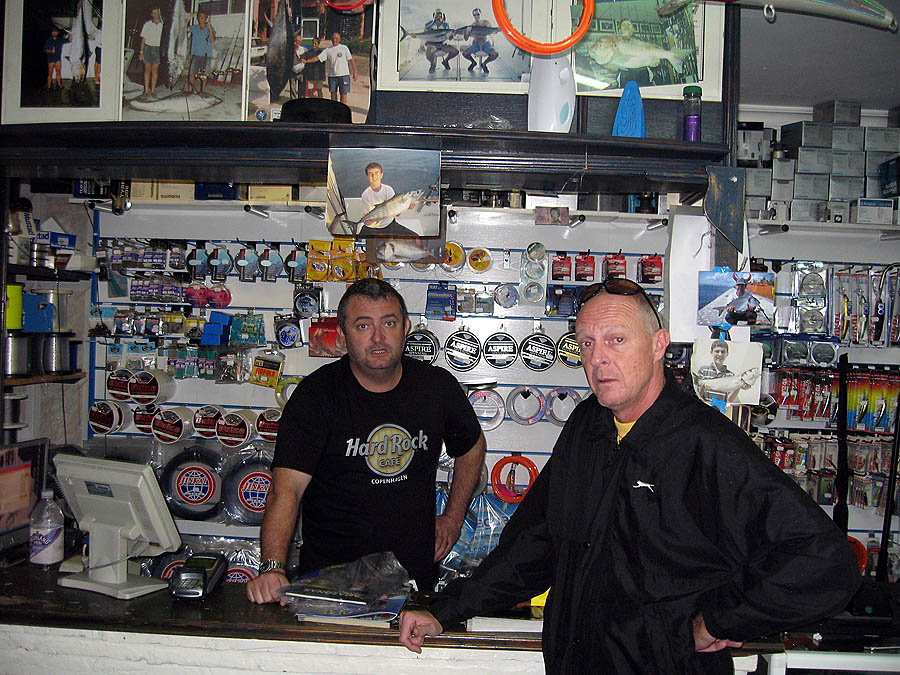 So began an adventure that same afternoon aboard the Polo IV, a Rodman 870 with two 200hp engines. As we cruised out the fishing grounds amid hundreds of porpoise, Capt. Danny Gabay told me that there are almost always schools of baitfish in the strait, and they often congregate on 1,600-foot plateau, with the surrounding depths plummeting to 3,300 feet.
So began an adventure that same afternoon aboard the Polo IV, a Rodman 870 with two 200hp engines. As we cruised out the fishing grounds amid hundreds of porpoise, Capt. Danny Gabay told me that there are almost always schools of baitfish in the strait, and they often congregate on 1,600-foot plateau, with the surrounding depths plummeting to 3,300 feet.
Since fishing with natural baits is prohibited in Spanish waters, we trolled large Yo-Zuri lures Bonita 21 and 26, which are specifically designed for big game fishing; our preferred color schemes being Blue mackerel and Dorado. The crew set out a spread of four lines with the lengths of 120, 100, 80 and 60 meters, with the longest on the outside. Danny Gabay set the trolling speed at 6 knots.
Artificial baits may not be quite as effective as natural baits, but they still produce on average one tuna per trip in the “hot” weeks – especially when the weather is optimal, and there is a strong afternoon tide. In prime conditions, Capt. Danny Gabay says he can pretty much guarantee tuna strikes.
Tuna caught in the strait in July and August usually weigh between 200 and 350 pounds, with the largest on the Polo IV so far at 600+ pounds. The heaviest the Gibraltar recreational fishing community has seen so far weighed nearly 1,000 pounds, which was caught by a Spanish friend of Danny Gabay.
Bluefin Battle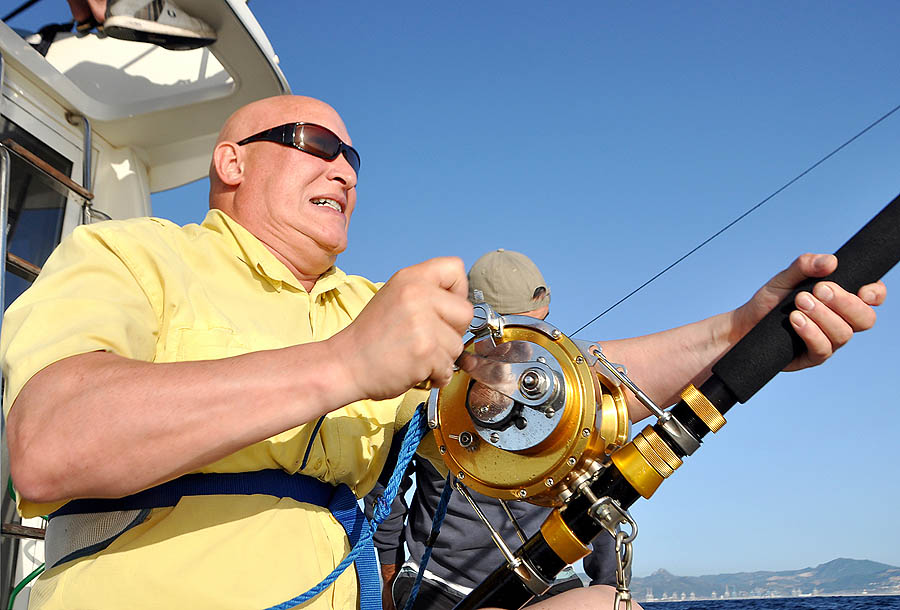
My conversation with Danny Gabay was abruptly interrupted when the one of the crew yelled, “Fish on!”. I clambered into the fighting chair; the crew strapped me into a harness. Now I was connected to the rod and reel, connected to a fish, which was streaking in the general direction of Africa as line spewed off the reel. My immediate worry was whether I was actually connected to the chair and the boat itself, because I had already seen how powerful these tuna really are, and I didn’t want to end up flying off the stern of the boat and with a deep, blue watery grave at the end of it. In the tackle shop, they let me try and run with the line, and the reel drag set for normal tuna fight. I only managed to wrestle off 3 meters of line from the reel, before I was stopped dead in my tracks; no way was I able to do anymore; and the tuna sometimes fight for 6 hours on kilometer-long runs.
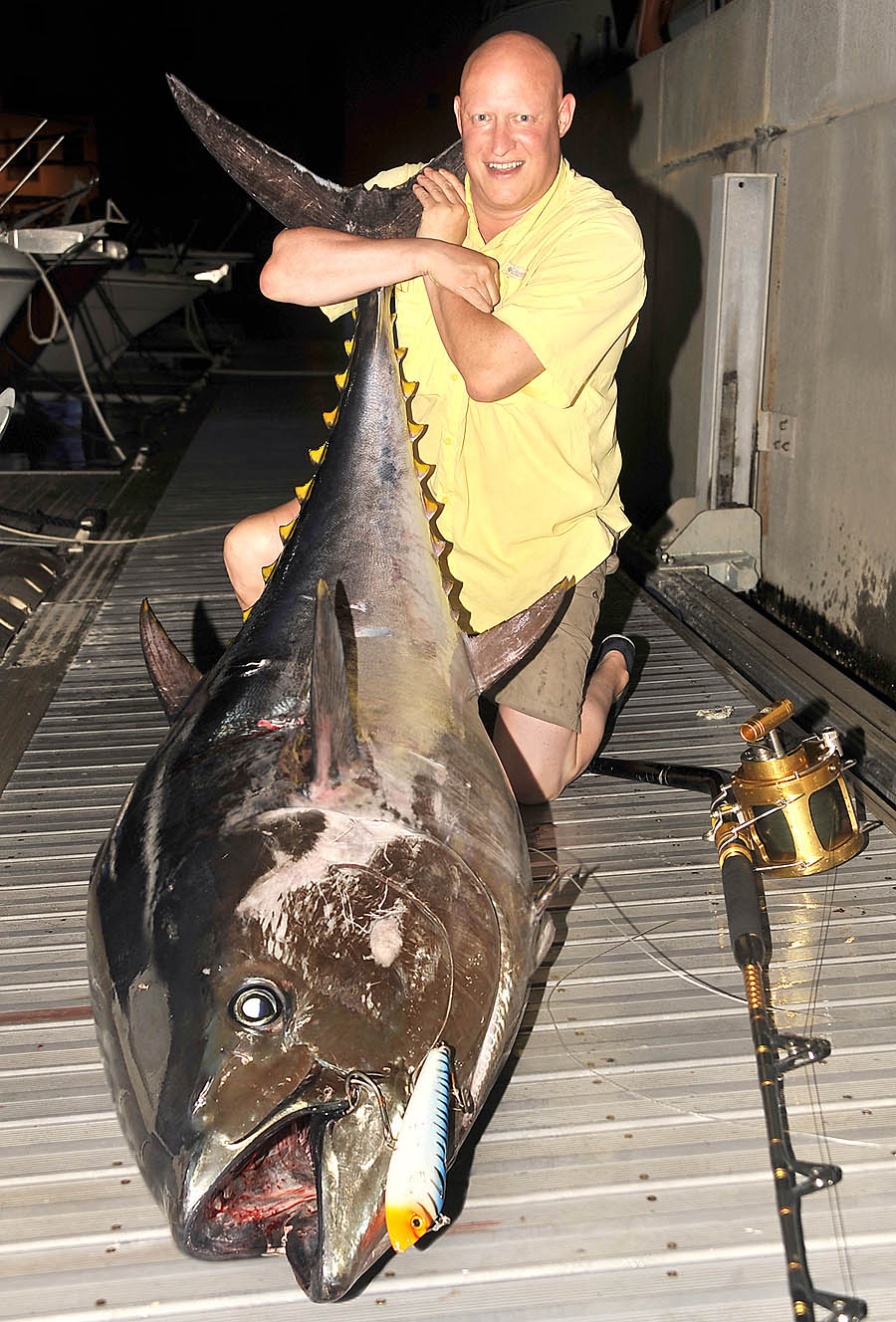 I could forget about striking, because there was absolutely no way I could put more pressure on the gear, than what the tuna already did. If the hooks weren’t in, there was nothing I could do about it. For what felt forever, there was little to do but watch the line leaving the reel, rod bent with such force no normal man ever would be able to produce. I could was only along for the ride for the first 15 minutes or so, until the tuna itself decided to turn towards the boat. The experienced captain quickly powered up barely keeping tension on the line; not that I paid very much attention to what the captain did, I had more than enough to concentrate on, reeling for dear life, doing my best to try and lay the line in an orderly fashion on the huge reel.
I could forget about striking, because there was absolutely no way I could put more pressure on the gear, than what the tuna already did. If the hooks weren’t in, there was nothing I could do about it. For what felt forever, there was little to do but watch the line leaving the reel, rod bent with such force no normal man ever would be able to produce. I could was only along for the ride for the first 15 minutes or so, until the tuna itself decided to turn towards the boat. The experienced captain quickly powered up barely keeping tension on the line; not that I paid very much attention to what the captain did, I had more than enough to concentrate on, reeling for dear life, doing my best to try and lay the line in an orderly fashion on the huge reel.
The fish took three long runs, so three times I had to battle it back. One and a half hours under the blistering sun, and I was nearly worn out, when the fish finally gave in and let Lee hand-guide the trace to the side of the boat, where it was gaffed professionally by the crew.
We brought the fish back to the harbor, where a professional scale was set up, and we could get a precise weight of the tuna, which was 150,0 kg / 331 lbs.
Since then, I have been to Gibraltar to fish for the tuna many times, and the tuna population seems to grow with each new visit.
Popper Magic
In autumn, there hundreds of smaller size tuna hunting flying fish on the surface, which is a perfect time to fish with surface lures like poppers. In September everybody catches!
In October 2014, I was invited go at popper fishing for the tuna. When I arrived I was informed that the fishing wasn’t as good as the previous month. (How often do you hear that, I thought.) As it turned out, we caught 14 bluefin tuna in four days, while fishing only four hours each day. The fish ranged from 44 to 120 pounds.
Having the chance of a catch them on popping gear is just unbelievable. In my 35 years of adventure fishing, I never for a moment thought I would have that chance. Since then we have caught many more.
 The popper-fishing basically starts when you exit the harbor and enter the Bay of Gibraltar. We search for birds or dolphins hunting small fish in the surface; preferably flyingfish. Your best shot at getting a tuna strike is to cast in front of a flyingfish’s direction because the tuna follows underneath and attacks anything making a splash in front of it. It ranks as one of the most exciting ways to fishing, and proves very rewarding when you get it right.
The popper-fishing basically starts when you exit the harbor and enter the Bay of Gibraltar. We search for birds or dolphins hunting small fish in the surface; preferably flyingfish. Your best shot at getting a tuna strike is to cast in front of a flyingfish’s direction because the tuna follows underneath and attacks anything making a splash in front of it. It ranks as one of the most exciting ways to fishing, and proves very rewarding when you get it right.
It can also be exhausting. Imagine casting with heavy poppers four hours straight for several days, only to be interrupted by gut wrenching fights. I assure you, that hurts. But it hurts in the greatest way possible.
Today the number and weight of “spawning-able” tuna is nearly double of what it was in the 1950s when fishing for Atlantic bluefin tuna was considered very, very good – so much so, that the threat level the IUCN (the International Union for Conservation of Nature) states, has gone from red/endangered to green/least concern.
But, of course, we still need to keep up the good work, and keep monitoring the population. N one wants to run the risk of endangering these magnificent fish again. Today, Gibraltar has its own national quota of 10 tons for the season (June to October).
With the proper fisheries management, the giants of Gibraltar will be pleasing anglers for the foreseeable future.
Limits and Catch & Release:
When I started fishing with Danny Gabay & co. we trolled in the Strait of Gibraltar, which is Spanish and Moroccan territorial water, but due to severe diplomatic problems between Spain and Gibraltar (British territory) over sovereignty of the peninsula, it has become harder and harder to obtain Spanish fishing licences. As a result Gibraltar applied for its own quota, and received it for 2015. Fishing in Gibraltar waters means fishing within the national 3 mile limit. There are probably more tuna in the strait, but since fewer fish in the Gibraltar waters, more than enough big fish have been caught trolling. Actually, my son and I (with Polo IV crew) caught the first official Gibraltar-tuna: 336, 343 and 380 pounds in July 2015.
The quota is 10 tons per year, but tuna fishing is allowed after the limit is reached (within the tuna season mid-May to mid-October, of course), as long as catch and release is done. The minimum size for keeping tuna is according to ICCAT suggested rules (The International Commission for the Conservation of Atlantic Tunas) of 115 cm.
Along with new status for Gibraltar regarding tuna fishing, fishing licences have been issued for the angler and local fishermen, and as a result of the increase in sportfishishermen it is strongly believed that the locals needn’t rely on income from the tuna fish themselves, but more and more from guiding. This should inspire the locals to accept catch and release to an increasing degree, instead of killing the fish to sell them to restaurants.
I am also taking part in the positive work to preserve the tuna and develop an interesting fishery by working with the Gibraltar government. I have had a meeting with with Stephen Warr, senior environmental officer, and Danny Gabay, 2 times gold winner and 2 times silver in EFSA Biggame Fishing Competitions, and spokesman for the local sportfishermen, to help with this interesting project. One of the positives already implemented is the ICCAT tagging of the tunas.